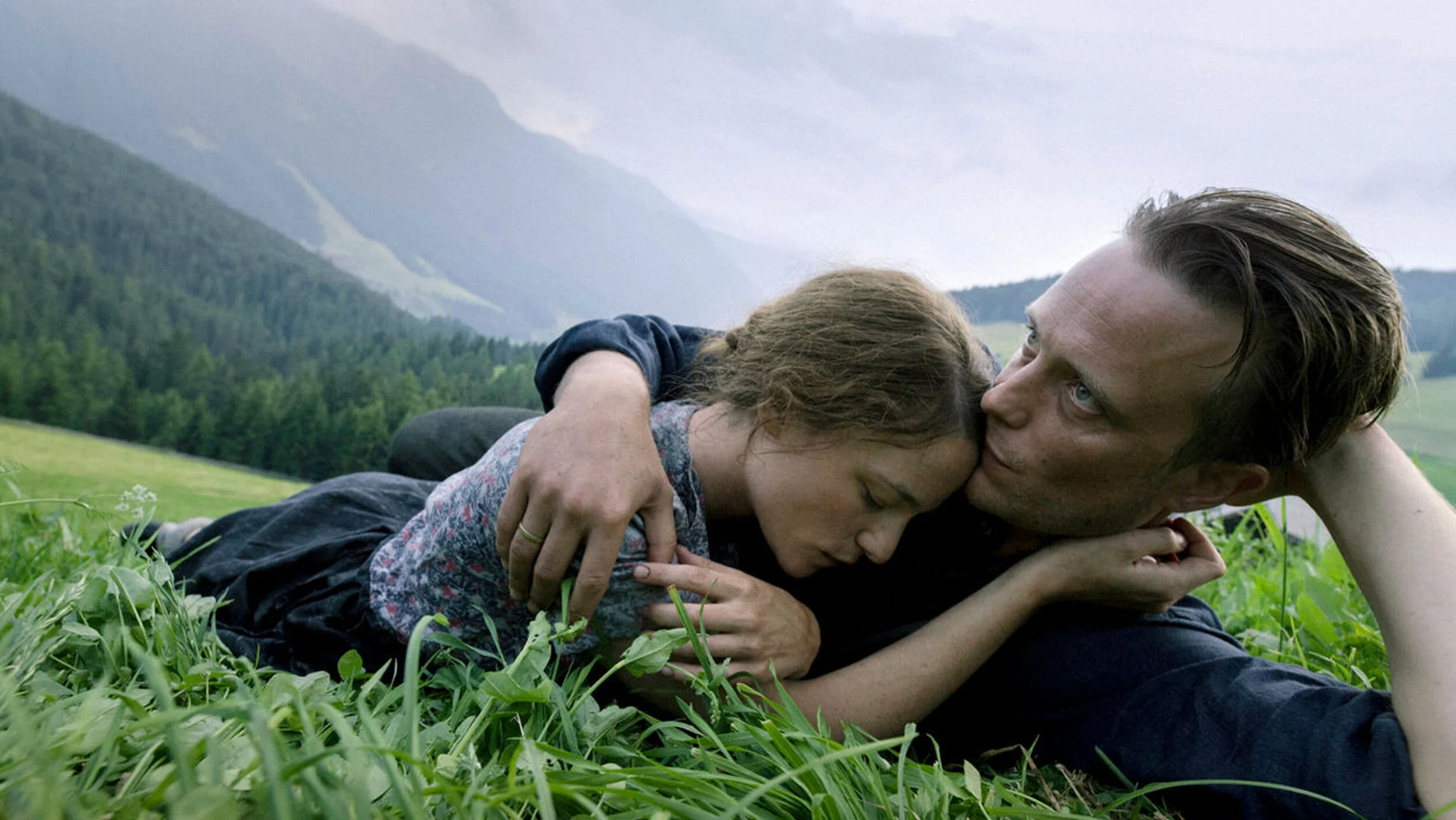There and Back Again: Terrence Malick and ‘A Hidden Life’
by Will Lindus
‘Awwww yeah, Malick is back, baby!’ A friend had the opportunity to catch up with the new Terrence Malick film A Hidden Life at a film festival that ran its screening before our local Austin press screenings, and when I asked him about his impressions of the film, he gave me that quote. I can’t say I disagree with the statement; it is both resonant and accurate to my own feelings about the film. More so, I think it speaks to the arc of Malick’s career, to the journey he has made as a filmmaker, and the interesting detours he’s taken along the way.
Those unfamiliar with Malick’s work may only be familiar with the tropes: people spinning in fields of wheat with disconnected voice-over narration speaking wistfully and ambiguously of the hidden truths of the universe. These are certainly tools in Malick’s toolbox, but they don’t fully encapsulate the creative presence Malick brought to the film scene with his earliest films, most notably Badlands and Days of Heaven. Malick enjoys an aloof approach with his narrative structure, sure, but these first two films specifically were grounded in characterization, setting, and plot.
As Malick explored the potential of the medium, he peaked with the abstract Tree of Life, a film that somehow managed to be about the experiences of one family while also being about the entire arc of time, the universe, and of human civilization. It was ambitious, and it helped open the door for a love of digital filmmaking techniques that Malick would use as his crutch for his next three features, To the Wonder, Knight of Cups, and Song to Song. These three films allowed Malick to explore ways to utilize fisheye lenses and crisp cinematography in his storytelling. Unfortunately, these films featured very little of the grounding elements that made his early filmography work, nor the sense of wonder that allowed Tree of Life to soar. And, after the third of these hit theaters, it left audiences and critics wondering if Malick was stuck in a rut.
Which brings us back around to A Hidden Life. Malick’s career - much like this review - has been on a long journey to and through several different techniques and styles. When I hear that ‘Malick is back,’ I nod in agreement not because he is making the films the same way that he used to, but because this new version of Malick - our Malick 3.0, if you will - has returned to his traditional narrative roots but with all of those techniques and skills that he picked up along the way still at his disposal.
A Hidden Life finds us in Austria during World War II. In a small, pastoral area, farmhand Franz Jägerstätter finds himself conscripted into military service during Nazi occupation. A conscientious objector, Franz refuses to fight, soon finding himself imprisoned and facing execution unless he retracts his objection and agrees to serve. Based on the true story about Franz Jägerstätter, ‘A Hidden Life’ finds the beauty and the love and the human connection between Franz (August Diehl) and his wife Fani (Valerie Pachner) as they pine for one another, while also allowing the grim nature of the circumstances to permeate each scene.
Yes, you have gorgeous shots of wheat fields, but they feel almost more appropriate here than in any of Malick’s films; from behind bars, Franz longs for those fields, along with the simple creeks and the rustic trails which become symbolic for the freedom that has been stolen from him. Yes, you have disconnected voice-over narration, but it serves the purpose of allowing Franz and Fani to say the things they wish they could say to one another, to explore the truths in their heads and in their hearts, even when miles apart. And with a mastery of digital cinematography, Malick is able to make these scenes beautiful, poignant, heartbreaking, and inspirational.
Bottom Line: I did not like To the Wonder, Knight of Cups, and Song to Song at all, but have fallen in love with Malick all over again with A Hidden Life. For those that have dismissed him of late, whether it be because you fell out of love with his filmmaking choices or because you haven’t given him a shot because his films feel inaccessible, I’d strongly encourage you to check out A Hidden Life. It packs an emotional punch and tells the story of something very real that actually (and tragically) happened, all while still maintaining the artistic thumbprint of a Terrence Malick who has been there and back again.
4 out of 5 Bear Paws


